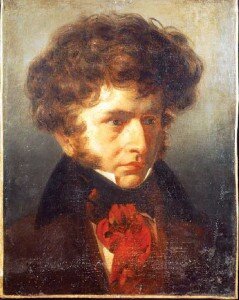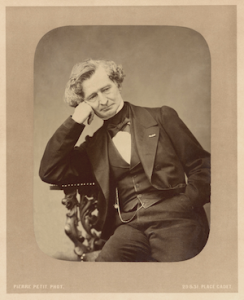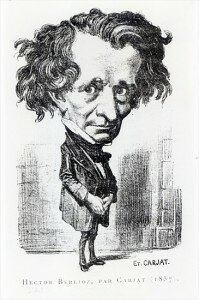There you are, just chilling out with a bit of 17th century choral music like any self-respecting person would do, and then all of a sudden, BAM! High C! Emotional overload! Skip straight to it by pressing play below…
2. The climax of Beethoven's 9th Symphony
Everyone sing along! "Freude, schöner Götterfunken, Tochter aus Elysium!" This is such a fist-pumping moment. How fist-pumping? Well, it's supposed to encapsulate the joy of humanity, of being alive, Germanic might, the brotherhood of man and basically all worldly positivity, which is a pretty tall order. Does Beethoven manage it? Take a listen… (the answer's 'yes', by the way.)
3. The opening chords of Elgar's Cello Concerto, played by Jacqueline Du Pré
Few pieces are so iconic that they can be defined by a few chords alone, and few musicians are so iconic that they can be defined by one piece. In a word, 'whoompf'.
Watch the performance here .
4. The Tristan Chord
How can one chord redefine the way we think about music? Well, it's simple. All Wagner did when he plonked this gorgeous little progression into the opening of his opera Tristan und Isolde was use an augmented fourth, an augmented sixth and an augmented ninth above the root to imply a completely different harmonic relation. Easy, yeah? Oh, just listen to it…
5. Don Giovanni is dragged to hell
Much of Mozart's Don Giovanni is actually quite humorous, with amorous japes and farce aplenty, but things take an incredibly sinister turn right at the end when the Don himself (think of him as a folkloric version of Russell Brand with comparable dress-sense) is finally forced to atone for his sins. There's a slow knock at the door, Giovanni opens it and is confronted with a stone state of the Commendatore, who drags the screaming Don into the fiery netherworld. Yikes!
Watch the whole scene here .
6. When all 40 voices come together in Spem in alium
Spem In Alium is a choral classic given a new audience thanks to a certain E.L. James, but we prefer to think of Thomas Tallis' piece as it was intended - a whacking great 40-part motet with one of the most breathtaking ensemble entries in the whole repertoire. Press play below to hear those 40 parts suddenly arrive all at once…
7. "Zaaadoook The Prieeest!"
You know how it is. You're just bumbling along, minding your own business, maybe there's some baroque music in the background… KAPOW! Mass choral entry! Something about a priest! Make sure you're sitting down for this one.
8. The Rite Of Spring causes a riot
Imagine being so maddened and confused by a piece of music that you start a riot. A bit like how parents of Justin Bieber fans must feel, maybe. Anyway, Igor Stravinsky's Rite Of Spring was the original authority-botherer, with its rhythmic and textural originality causing the audience at its premiere to turn into a gibbering rabble, 40 of whom were ejected from the theatre. Give the Augurs Of Spring section a listen and try to resist the urge to flip a table.
9. When Ride Of The Valkyries turns up in Apocalypse Now
When he was composing Die Walküre , it's probable that Richard Wagner didn't have the Vietnam war in mind. However, since Francis Ford Coppola's Apocalypse Now, this exhilarating music has become associated with exactly that. And helicopters. And explosions.
10. The high notes in the Queen Of The Night aria
As well as being an OMG moment, this is a "did I just hear that correctly?" moment. Actually, it's more like an "is that an alien singing, and why has my champagne flute exploded?" moment. Just listen.














 His chosen path plunged the budding composer into an archetypal struggle, not only for financial survival but also for the acceptance of his artistic ideas, a task to which he would tirelessly devote all his creative and intellectual energy. And as you might well imagine, he was widely misunderstood in his own lifetime. Claude Debussy, as he was working on his own opera, Pelleas et Melisande, wrote “Berlioz was never, properly speaking, a musician of the theater.” This seems a rather strange comment on a composer whose work is from beginning to end intensely dramatic in character. For his critics, Berlioz was more successful as a dramatist in his symphonies than in his stage works. The dramatic brilliance of his orchestral writing, according to the argument, detracted from the theatrical effectiveness of his operas. Berlioz completed only five operas, but he contemplated or sketched many more and had at least one operatic project in mind throughout his life.
His chosen path plunged the budding composer into an archetypal struggle, not only for financial survival but also for the acceptance of his artistic ideas, a task to which he would tirelessly devote all his creative and intellectual energy. And as you might well imagine, he was widely misunderstood in his own lifetime. Claude Debussy, as he was working on his own opera, Pelleas et Melisande, wrote “Berlioz was never, properly speaking, a musician of the theater.” This seems a rather strange comment on a composer whose work is from beginning to end intensely dramatic in character. For his critics, Berlioz was more successful as a dramatist in his symphonies than in his stage works. The dramatic brilliance of his orchestral writing, according to the argument, detracted from the theatrical effectiveness of his operas. Berlioz completed only five operas, but he contemplated or sketched many more and had at least one operatic project in mind throughout his life.  Berlioz’s skill as an orchestrator lays not in the novelty of the instruments themselves as much as it is found in his skill of using and combining them. Before Berlioz, the functions of orchestral instruments associated melody and harmony mainly in the string choir, with winds used for occasional reinforcement and soloistic color. For Berlioz, as he comprehensively described in his treatise on orchestration and instrumentation, the invention of a particular tone colors for individual passages was part of the normal process of composition. Harmony and correct voice-leading become secondary elements, and melody and the color of the orchestral sound makes almost exclusive claims upon our attention. We know that Berlioz responded to a request from
Berlioz’s skill as an orchestrator lays not in the novelty of the instruments themselves as much as it is found in his skill of using and combining them. Before Berlioz, the functions of orchestral instruments associated melody and harmony mainly in the string choir, with winds used for occasional reinforcement and soloistic color. For Berlioz, as he comprehensively described in his treatise on orchestration and instrumentation, the invention of a particular tone colors for individual passages was part of the normal process of composition. Harmony and correct voice-leading become secondary elements, and melody and the color of the orchestral sound makes almost exclusive claims upon our attention. We know that Berlioz responded to a request from